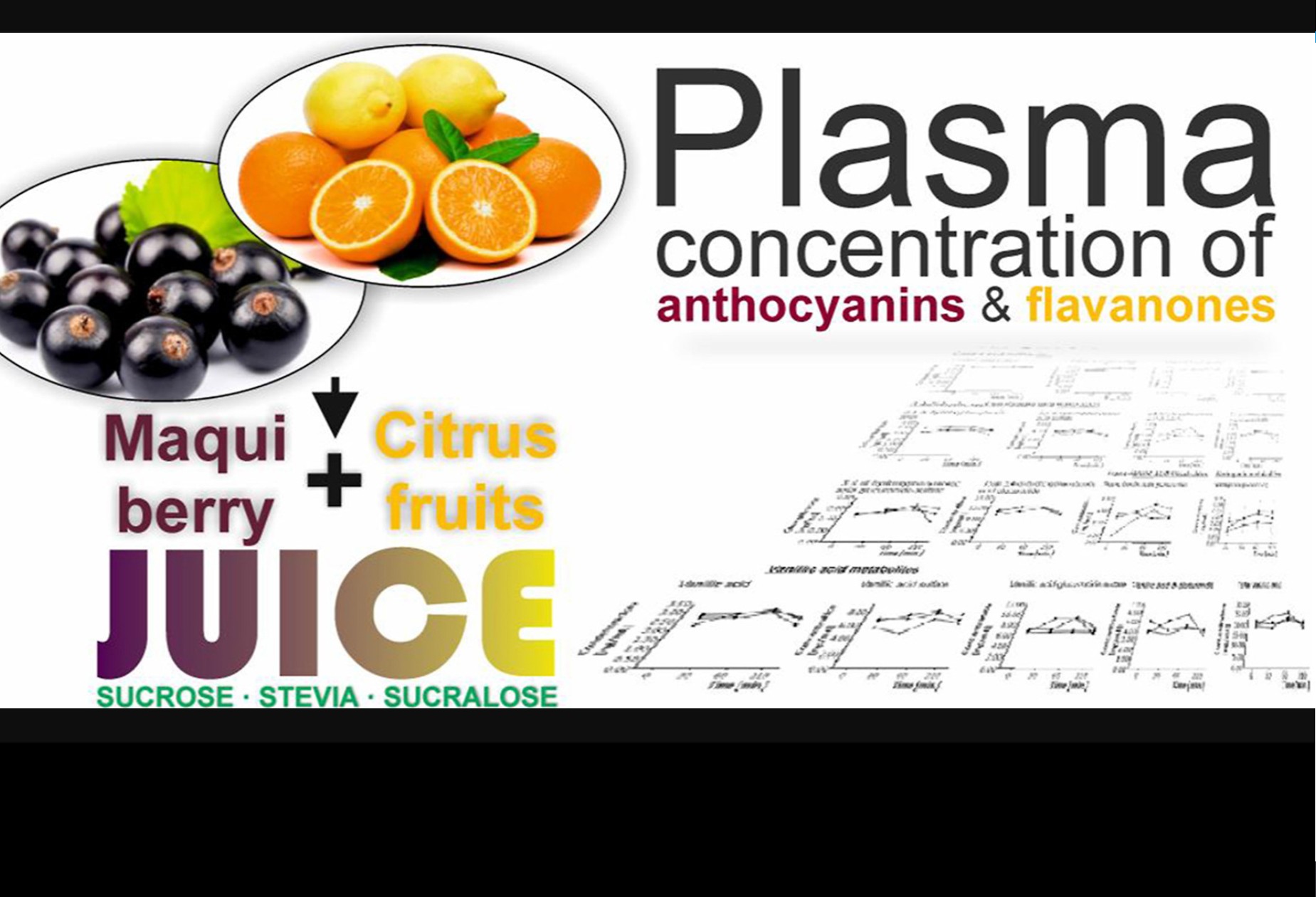Sweetener influences plasma concentration of flavonoids in humans after an acute intake of a new (poly)phenol-rich beverage
Vicente Agulló Nutrition, Metabolism and Cardiovascular Diseases Articles in Press E-mail Alert - November 24, 2020
Highlights
• Plasma concentration of bioavailable anthocyanins and flavanones was determined.
• Sweetener were assessed on their capacity to influence the bioavailability of anthocyanins and flavanones.
• The greatest bioavailability for these metabolites was provided by sucralose and stevia.
• Sucralose and stevia are valuable alternatives to sucrose.
The overconsumption of sucrose is closely related to sugar-sweetened beverages and one of the main factors associated with the increase of metabolic diseases, such as type 2 diabetes, obesity, and insulin resistance. So, the addition of alternative sweeteners to new fruit-based drinks could contribute to minimizing the incidence or severity of these pathologies. Nevertheless, current knowledge on the influence of these additives on the bioactive compounds present in these beverages is still scarce. Hence, to contribute to the understanding of this issue, the plasma concentration of phenolic compounds (anthocyanins and flavanones), after the ingestion of a new maqui-citrus-based beverage, supplemented with sucrose (natural high caloric), stevia (natural non-caloric), or sucralose (artificial non-caloric), was evaluated as evidence of their intestinal absorption and metabolism previous to renal excretion.
The beverages were ingested by volunteers (n=20) and the resulting phenolic metabolites in plasma were analyzed by UHPLC-ESI-MS/MS. A total of 13 metabolites were detected: caffeic acid sulfate, caffeic acid glucuronide, 3,4-dihydroxyfenylacetic, 3,4-dihydroxyfenylacetic sulfate. 3,4-dihydroxyfenylacetic acid di-sulfate, 3,4-dihydroxyfenylacetic di-glucuronide, 3,4-dihydroxyfenylacetic glucuronide-sulfate, trans-ferulic acid glucuronide, naringenin glucuronide, vanillic acid, vanillic acid sulfate, vanillic acid glucuronide-sulfate, and vanillic acid di-glucuronide, being recorded their maximum concentration after 30-60 minutes.
In general, sucralose provided the greatest absorption value for most of these metabolites, followed by stevia. Due to this, the present study proposes sucralose and stevia (non-caloric sweeteners) as valuable alternatives to sucrose (high caloric sweetener), to avoid the augmented risk of several metabolic disorders.















